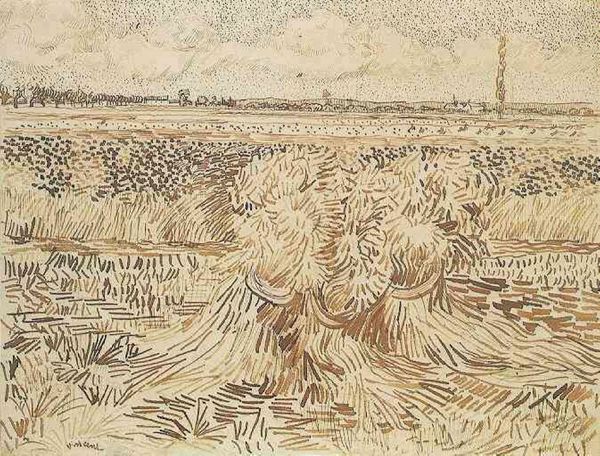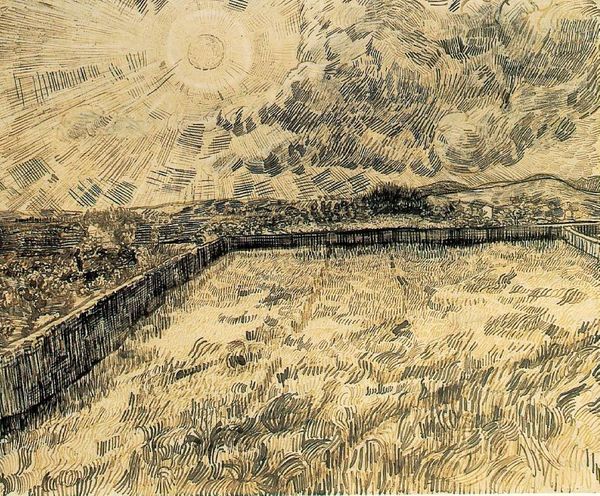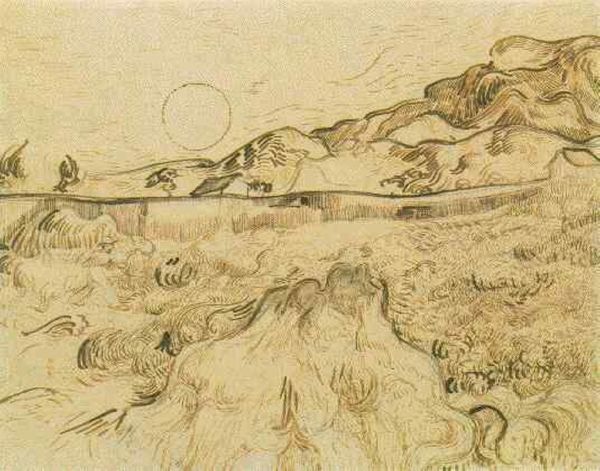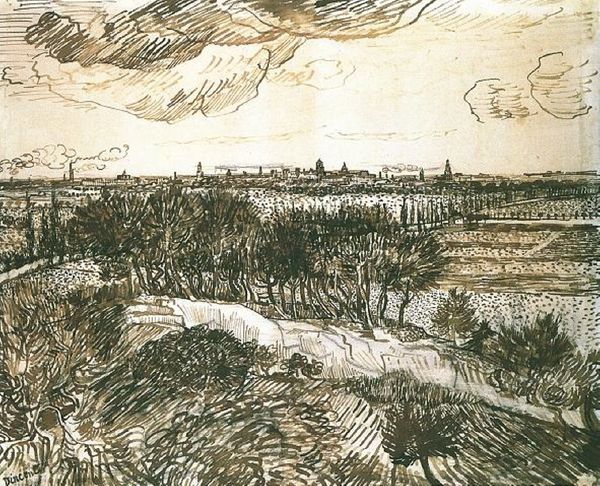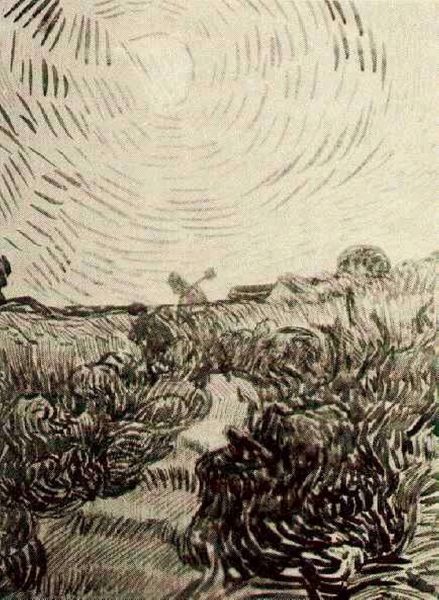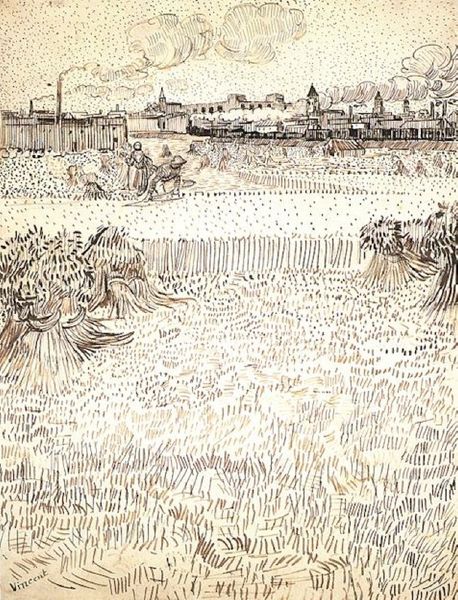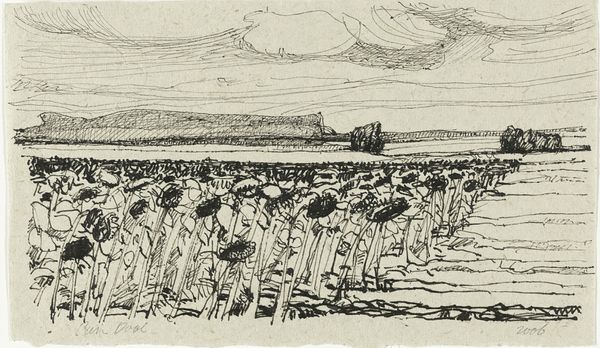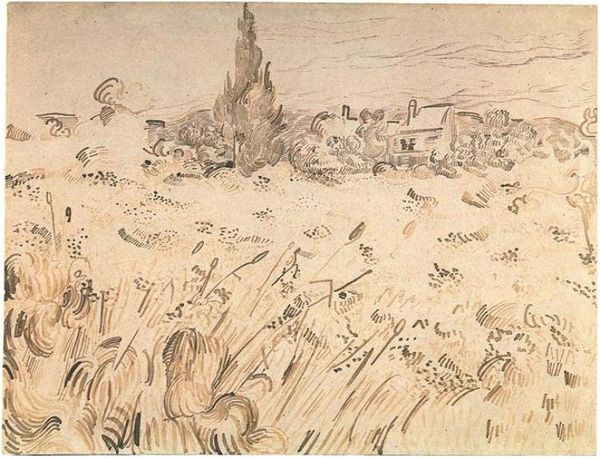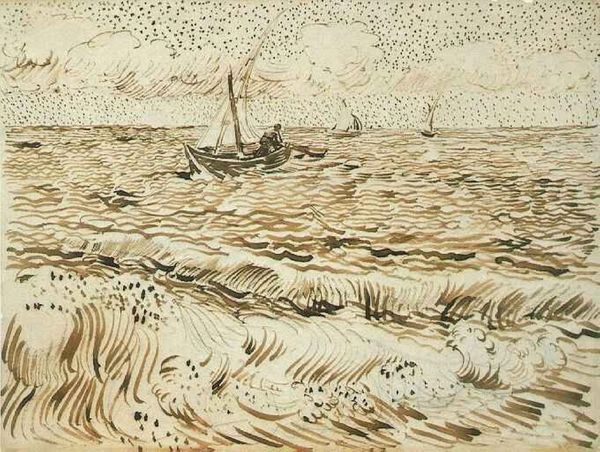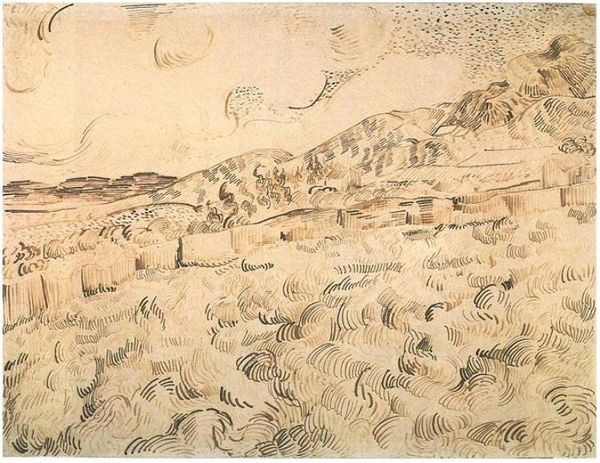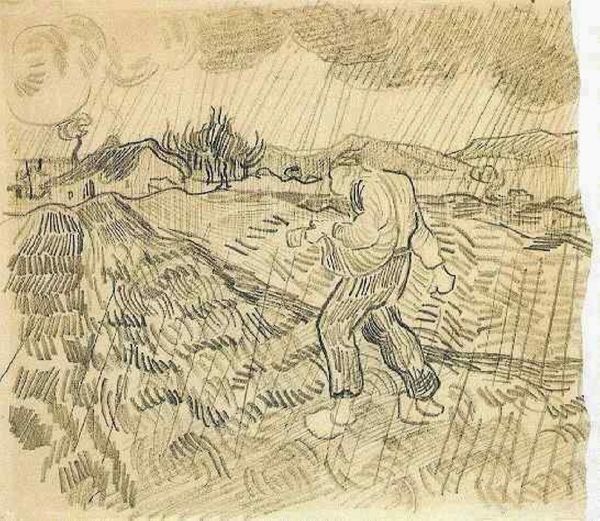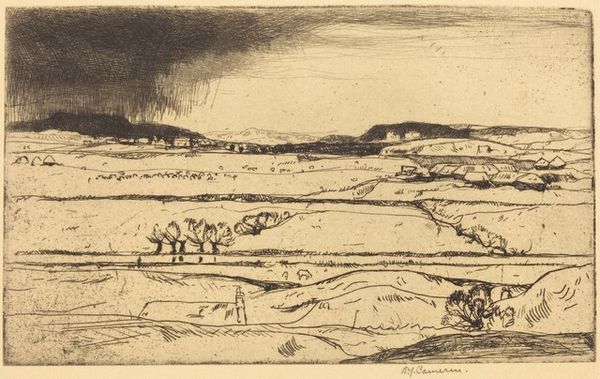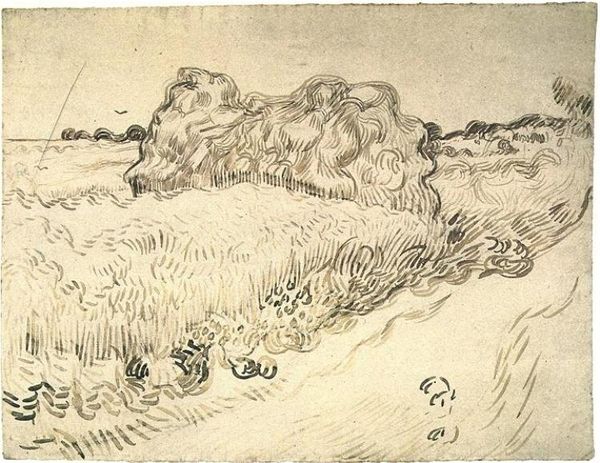
drawing, mixed-media, pencil
#
drawing
#
mixed-media
#
impressionism
#
landscape
#
figuration
#
pencil
#
post-impressionism
#
mixed medium
Copyright: Public domain
Curator: Looking at Van Gogh’s “Sower with Setting Sun” from 1888, what strikes you initially? The artwork employs mixed media on paper. Editor: The energy, the sheer dynamism of the marks! It's a field crackling with potential, that sower seems almost swallowed by the immensity of the act. A landscape imbued with toil and aspiration, a metaphor for labor as a social condition. Curator: Indeed. The figure of the sower is deeply symbolic. Sowing seeds connects to cycles of life, death, and rebirth. It's an archetypal image present across various cultures and religions, signifying hope and renewal even as it hints at the burden of rural labor. Editor: But also, isn't there something politically charged in depicting labor? The sower's act of scattering represents not just planting for the future, but also a form of resistance and sustenance, even claiming the land through hard work. He asserts a material relationship, one that involves social realities—a man against the elements for resources and wealth. Curator: That’s an interesting lens. The setting sun often symbolizes endings or the passage of time, yet here it could also represent a powerful force—the potential energy of the seeds ready to sprout. It highlights how meaning can shift, contingent on the historical era. It may signal how an existing social order ends as another begins. Editor: Exactly. The composition is particularly striking. The high horizon line amplifies the scope of the field and the lone worker's position relative to it. Van Gogh seems interested in rendering how vast social structures dwarf individual capacity, which suggests the burden and responsibility they carry when acting alone. Curator: We know Van Gogh found comfort and purpose in depicting rural life, so it aligns with what you’re suggesting. Ultimately, through repeated engagement with such visual representations, social meanings and values evolve. Editor: Van Gogh gives us an opportunity to think critically about who benefits from labor practices and the distribution of resources in both the 19th and 21st centuries. I found it valuable to contextualize his symbol usage with current events and philosophies. Curator: I see that, his engagement with universal visual language makes him so very relevant even today.
Comments
No comments
Be the first to comment and join the conversation on the ultimate creative platform.
